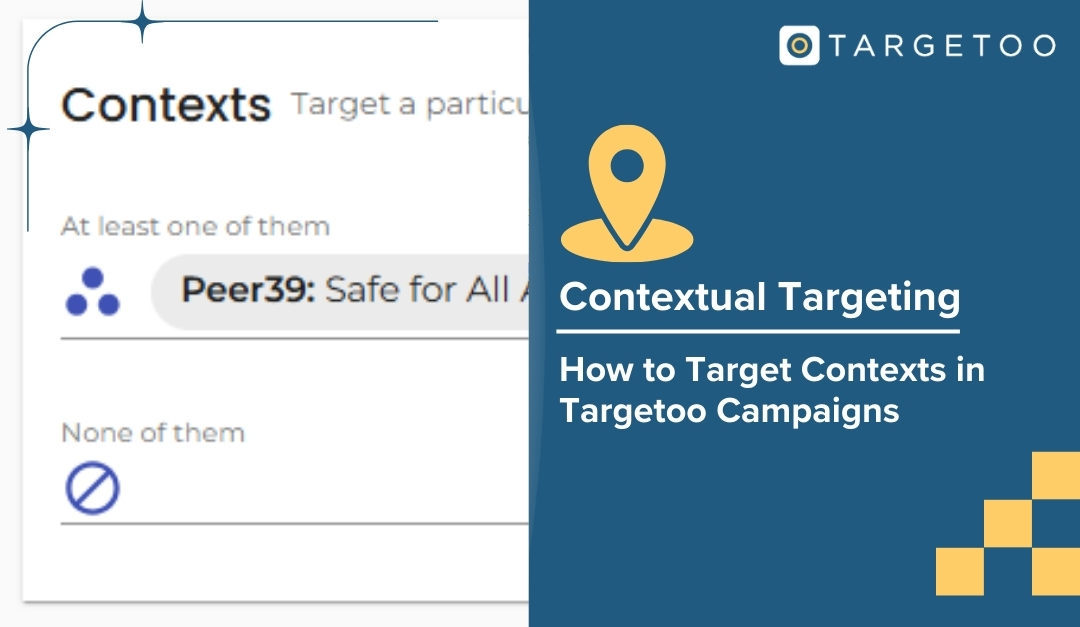As digital advertising evolves, privacy regulations and the phasing out of user IDs challenge how we maintain relevance in our campaigns. Contextual targeting—using the environment in which an ad appears rather than personal data—has become essential. With Targetoo, advertisers can now strategically target Contexts, especially within Connected TV (CTV) and Multichannel campaigns.
What Is Contextual Targeting in Targetoo?
Contextual targeting allows you to reach users based on the publisher’s content category, which is determined not by self-declared metadata but by a context agent (like Peer39 or IAS). This ensures accuracy and consistency across supply.
How to Set Up Contextual Targeting
1. Select a Vendor
Choose your preferred contextual data provider:
-
Peer39
-
Integral Ad Science (IAS)
-
Or select All to access all available segments.
2. Choose Targeting Rules
Apply one of three rules to define how contexts are used:
-
At least one of them (Recommended): The campaign will target users matching any of the selected contexts—great for broader reach.
-
Mandatory ones: Ads will serve only if all selected contexts apply to the user—this narrows the audience.
-
None of them: Blocks users in any of the selected contexts—used for exclusions and brand safety.
3. Select the Contexts
Use the dropdown or search bar to find and apply specific contexts like:
-
“Latin America News”
-
“Back to School”
-
“Travel & Leisure”
Each selected context appears as a “pill” under the chosen rule.
Managing Multiple Contexts
When using multiple contexts:
-
Prioritize the cheapest context first to optimize bidding costs.
-
Keep your targeting in “At least one of them” to maximize reach.
-
Use different strategies or line items for each context if needed, allocating separate budgets or applying distinct optimization rules.
Blocking Contexts for Brand Safety
To exclude sensitive or unwanted content, add contexts under the “None of them” rule (e.g., “Tragedy,” “Adult Content”).
Why Contextual Targeting Matters
Contextual targeting improves performance, ensures privacy compliance, and protects your brand—all without needing personal identifiers. By integrating it into your CTV and multichannel campaigns, you can stay relevant and effective in the cookieless future.

